It’s time to decorate — with nourishing bird treats
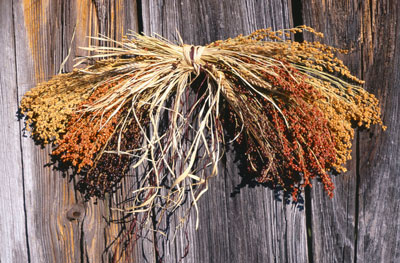
When it comes to luring birds to winter gardens, fruit-studded wreaths, seed-rich bouquets, and taste-temping bird buffets are enticing additions to traditional seed hoppers, tubes, and platform feeders. Besides providing nourishment to hungry birds, the treats add decorative appeal to gardens, and they are fun to make.
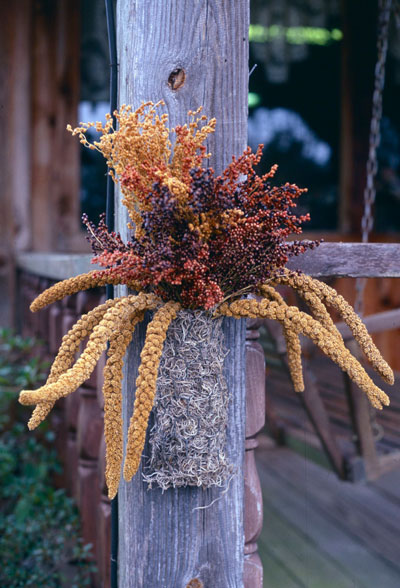
Start by offering seed-rich posies consisting of broom corn and millet sprays. Gather the stems together, tie them with string, wrap them with moss, and then secure the moss by wrapping it with chicken wire. Display the nutritious bouquet on a porch post or atop an upright landscape timber. It won’t take long before mourning doves, finches, sparrows, and other birds that favor small seeds begin to congregate.
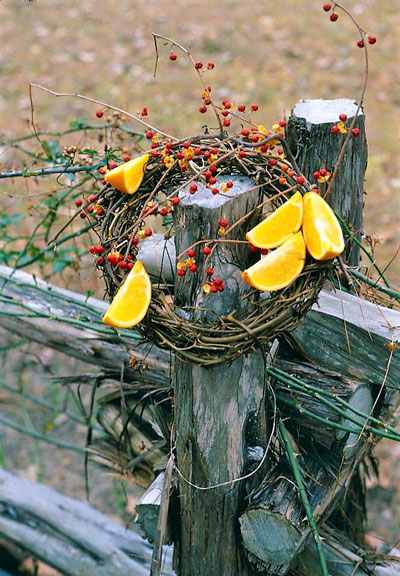
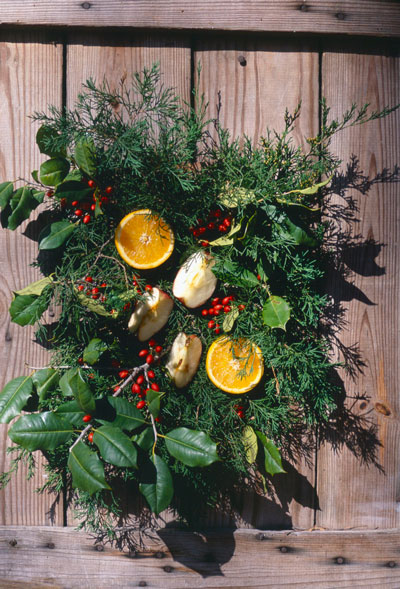
Appeal to the appetites of fruit eaters such as blue jays, mockingbirds, and chickadees by offering fruit-laden wreaths. Jump-start the avian feeding station by attaching orange sections or apple chunks to a small grapevine wreath. Drape it over a fence post. To attract robin, eastern bluebird, mourning dove, and other species who relish berries, embellish a large grapevine wreath by weaving in sprigs of berry-rich greenery like holly and cedar. Add a sunflower seedhead for woodpeckers, cardinals, and their seed-eating friends. The smaller seedheads of native sunflower attract birds, too. Display the wreath on a potting shed door or lay it flat on a patio tabletop. To keep the birds coming, replenish the treats as they are eaten.
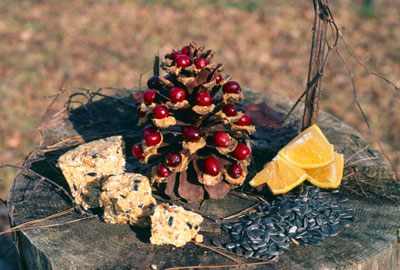
Make the most of feeding platforms, tree stumps, and shallow saucers by offering bird buffets. Highlight the smorgasbord with protein-enriched pinecones made by smearing a glob of peanut butter on the tip of each petal, and then topping each glob with a cranberry. Surround the pinecone with sunflower seeds, suet chunks, and pieces of fresh fruit.

As with any bird feeding program, check the site regularly to keep it clean and free from spoilage. Provide fresh water.
Sidebar: Critter Christmas trees
Critter Christmas trees appeal to birds, squirrels, and other wildlife. Hang the nutritious ornaments from low-growing branches. (As an alternative, suspend the treats from a sturdy trellis, shepherd’s rod, or anywhere in the garden that is accessible to birds.)
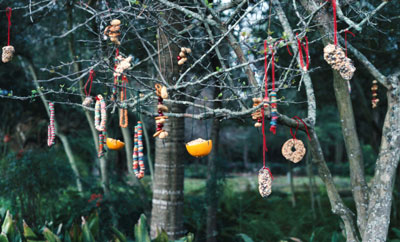
Begin the family-friendly project by making garlands. Young kids don’t have to be asked twice to string colorful loop-shaped cereal on short pieces of yarn or to slather peanut butter on small pine cones before rolling the sticky treats in birdseed (make sure to first attach a jute hanger).

Oranges provide the makings for fruit cups. Cut each orange in half, scoop out the fruit, poke three equally-spaced holes near the top, and attach three pieces of raffia to make a hanger. Hang the cup from a tree branch before filling it with birdseed, grapes, or apple chunks. Dried mealworms attract chickadee, cardinal, bluebird, and nuthatch, among other bird species.
